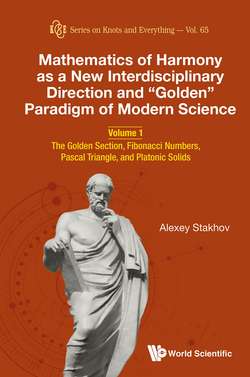Читать книгу Mathematics of Harmony as a New Interdisciplinary Direction and “Golden” Paradigm of Modern Science - Alexey Stakhov - Страница 9
На сайте Литреса книга снята с продажи.
Proclus Hypothesis
ОглавлениеThe Greek philosopher and mathematician Proclus Diadoch (412–485 AD) put forth the following unusual hypothesis concerning Euclid’s Elements. Among Proclus’s mathematical works, his Commentary on the Book I of Euclid’s Elements was the most well known. In the commentary, he puts forth the following unusual hypothesis.
It is well known that Euclid’s Elements consists of 13 books. In those, XIIIth book, that is, the concluding book of the Elements, was devoted to the description of the geometric theory of the five regular polyhedra, which had played a dominant role in Plato’s cosmology and is known in modern science under the name of the Platonic solids.
Proclus drew special attention to the fact that the concluding book of the Elements had been devoted to the Platonic solids. Usually, the most important material, of the scientific work is placed in its final part. Therefore, by placing Platonic solids in Book XIII, that is, in the concluding book of his Elements, Euclid clearly pointed out on main purpose of writing his Elements. As the prominent Belarusian philosopher Edward Soroko points out in [4], according to Proclus, Euclid “had created his Elements allegedly not for the purpose of describing geometry as such, but with purpose to give the complete systematized theory of constructing the five Platonic solids; in the same time Euclid described here some latest achievements of mathematics”.
It is for the solution of this problem (first of all, for the creation of geometric theory of dodecahedron), Euclid already in Book II introduces Proposition II.11, where he describes the task of dividing the segment in the extreme and mean ratio (the golden section), which then occurs in other books of the Elements, in particular in the concluding book (XIII Book).
But the Platonic solids in Plato’s cosmology expressed the Universal Harmony which was the main goal of the ancient Greeks science. With such consideration of the Proclus hypothesis, we come to the surprising conclusion, which is unexpected for many historians of mathematics. According to the Proclus hypothesis, it turns out that from Euclid’s Elements, two branches of mathematical sciences had originated: the Classical Mathematics, which included the Elements of the axiomatic approach (Euclidean axioms), the elementary number theory, and the theory of irrationalities, and the Mathematics of Harmony, which was based on the geometric “task of dividing the segment in the extreme and mean ratio” (the golden section) and also on the theory of the Platonic solids, described by Euclid in the concluding Book XIII of his Elements.
